Filed under: 2013-14
Hey, sorry for the late post. I have decided to change my concept since the last time I saw you both. I wanted to make something more ‘physical’ and less perceptional and to break away from the play with afterimages and shadows. So don’t see this as a continuation to the ideas I have brought in the last couple of meetings.
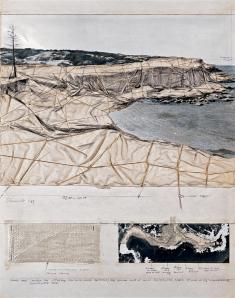
In the quest to discover and chart the new No Man’s Land a pioneer machine is sent. It slowly roams the land, collecting the trash and residue of civilisation which now fills those lands, and transforms it to a path or grid on the ground – the physical charting of it. That grid can later become the foundation of inhabiting that space.
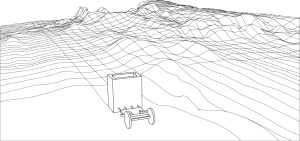
The machine is a furnace, collecting aluminium scrap in the form of cans, containers, foil and components. as it moves, it melts the aluminium and continually pours it in the path that it scores in the ground, creating a new Aluminium tamed landscape.
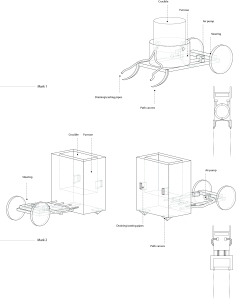
The aspects of this machine I will focus on are the movement in relation to melting and pouring the aluminium, understanding how a furnace for melting aluminium works and how will I need to modify it to achieve the “live continuous casting” required. I decided to to pre-feed the aluminium scrap into it and not have it collecting and feeding itself so I could focus on the part of the proposition which might give the final effect of land tamed by aluminium.

To begin, I have built a stationary furnace to understand if melting the aluminium is possible and what would it take to do so. The main modification I have introduced in the first prototype is the draining pipe in the bottom of the crucible piercing out of the furnace itself. Whereas usually the melting would be done by placing the metal in the crucible, the crucible in the furnace and then when the metal is melted, removing the crucible and pouring the ,metal into the mould, in my machine, the pouring of the molten metal, as well as the feeding and melting, needs to be continuous.
In the first attempt, I didn’t manage to raise the temperature to the melting point for aluminium (620c). So I reconfigured the woods and the air blowing in (to pump oxygen to the fire and increase the temp) as well as the distance between the fire to the crucible. at the end I shut it off and went to find better wood. The security guys joined in (btw, don’t worry, I got permissions to do this before hand form the safety office) and they gave me some good advice as to how to create a more consistent high temperature. In the second round, I have managed to melt the aluminium and pour it from the bottom drainage.
What’s next? :
After the first set of experiments I understand better that the furnace will need to be specifically designed to run on its own with no maintenance while it’s driving, and that has to do with its form. In addition, I will need to find a longer lasting burning material so that the machine won’t need more wood so often. Regarding the movement, I need to configure the arduino with the arduino robot component to have the machine creating a grid while avoiding obstacles. I would also need to find a way to insulate the heat from the dragging furnace so that the rest of the machine won’t melt as it drives.
1 Comment so far
Leave a comment
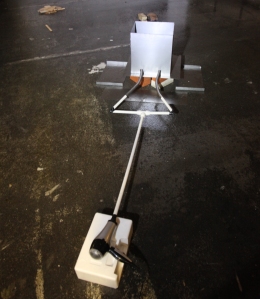

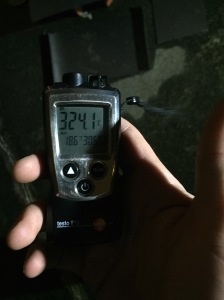
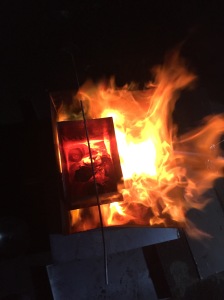


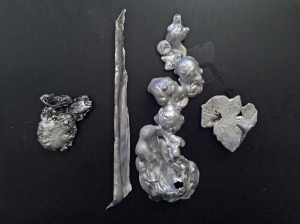
Hi,
Thanks for the post. However it is important for you to note that changing the concept so often has a lot more implications than just work faster and catch up. It is about being able to mature an idea while finding its difficulties and overcoming then while improving the idea. This unit is certainly about that, so if you keep changing it will be harder for us to help you consistently. So no more changes please.
At the moment it would be good to develop more the design of the piece, since is hard to see where the arduino goes and relates to the system overall. At the moment it seems the model works because a lot of your own intervention on it (your hand, parts more wishing to be a machine, but not really thought as such). Think on the basic needs for it to move on the landscape and producing its output. Take one problem at the time, since the analogical and digital technology potentially included here can be complex. So take just a few challenges and simplify the system. Since you are late on the arduino side please do catch up with one of the constraints of the exercise (the microprocessor) given by the unit.
This phase is about development a small concept and prototype versions, not find the most ground breaking narrative. Keep that in mind.
Comment by tutor November 23, 2014 @ 10:26 pm